Bushrod Crawford House
Introduction
Text-to-speech Audio
Images
Historic photo of Bushrod Crawford House. The building was once home to the store and residence of noted area secessionist Bushrod Crawford. Courtesy of Historic Beverly Preservation, Inc.
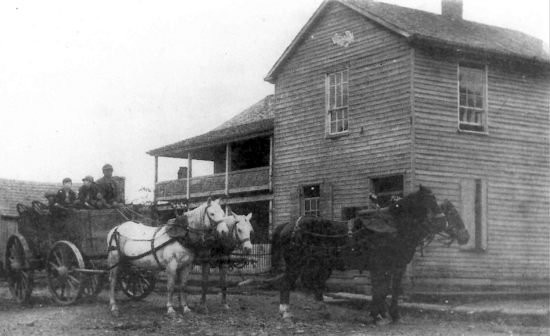
Modern photo of Bushrod Crawford House, now part of the Beverly Heritage Center. Courtesy of Historic Beverly Preservation, Inc.
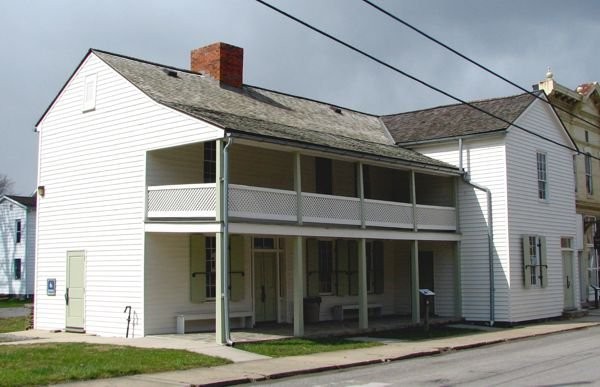
Union General George B. McClellan, who occupied the Bushrod Crawford House after the 1861 Battle of Rich Mountain. Courtesy of Wikipedia.
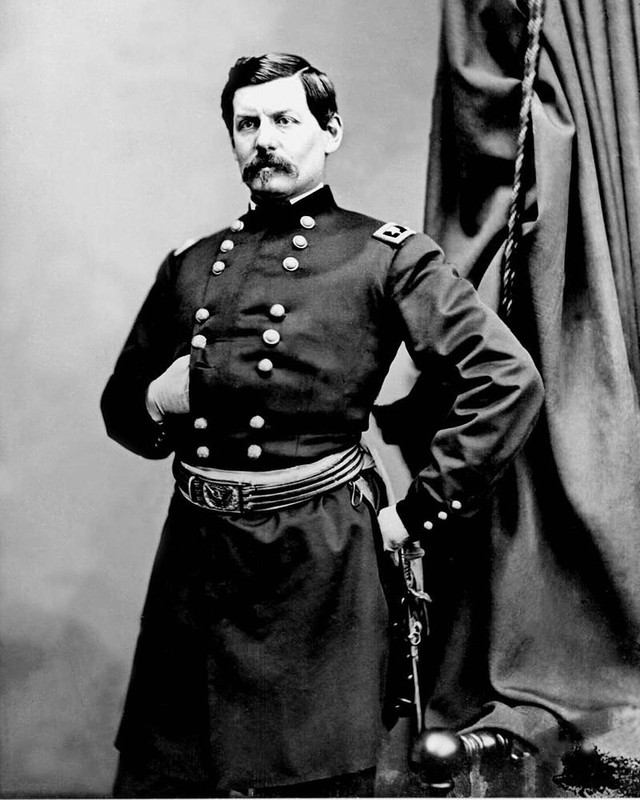
Map of the 1861 campaign that culminated in the Battle of Rich Mountain. Courtesy of the Rich Mountain Battlefield Foundation.
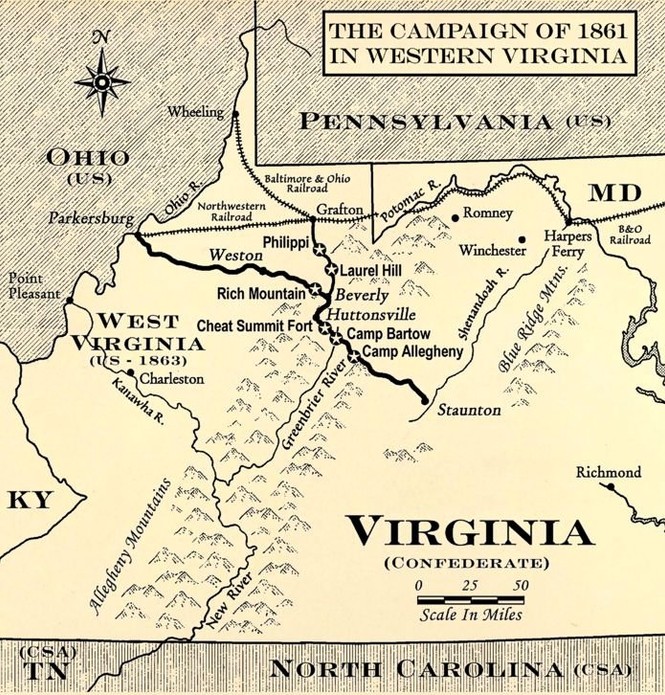
Map of the interior of the Beverly Heritage Center, which combines the Bushrod Crawford House with three other buildings on Court Street. Courtesy of the Beverly Heritage Center.
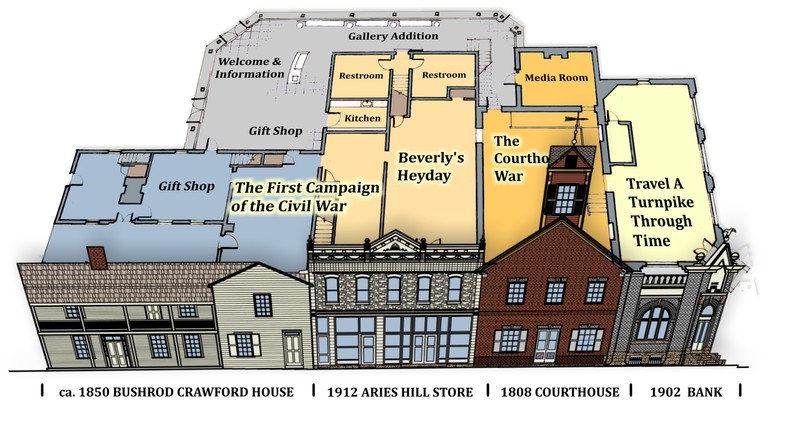
Backstory and Context
Text-to-speech Audio
The Bushrod Crawford House, named for its original occupant, served in both commercial and residential capacities in the early years of its existence, built to capitalize on the booming trade that came to Beverly with the arrival of several turnpikes during the period and to house one of the town’s most prominent citizens. The house also played a prominent role in the American Civil War, however. Because Beverly and the surrounding county stood at the intersection of several strategically important thoroughfares between eastern and western Virginia (and the north and south), the Federal government made a particularly forceful effort to keep it from joining the rebellion. After his victory in one of the earliest actions of the war, the 1861 Battle of Rich Mountain, Union General George B. McClellan utilized Crawford's home as his headquarters during his brief stay in Beverly. Crawford himself had fled south with the arrival of Federal troops to the area, but when the Confederacy surrendered he returned to his home and remained until his death in 1893. Over a century later, in the early twenty-first century, the building gained new life as part of the Beverly Heritage Center.
The Bushrod Crawford House has a number of architectural features that make it a fairly representative example of the Federal style popular in the mid-nineteenth century. The unornamented, symmetrical façade and gabled roof are particularly noteworthy, as were the multipaned windows included in the design prior to its renovation in the early twenty-first century. Built in a front-facing “L” shape, the four-bay portion of the two-story structure facing Court Street served as the Crawford brothers’ store while the remainder functioned as Bushrod’s residence. Brick chimneys in the center of each wing heated the building prior to the addition of modern upgrades and store patrons had access to a front porch on both levels. When the building was constructed circa 1850, the Crawfords no doubt hoped to profit from the increased trade and traffic brought to Beverly with the construction of the Staunton-Parkersburg Turnpike in 1847 and the Beverly-Fairmont Turnpike five years later.
Given the store’s prime location on Court Street and the Crawford brothers’ prominence in Beverly, it is likely that they were able to do just that. After all, the Crawfords had deep ties to Beverly as one of the earliest families in the area and Bushrod himself had served in a number of public capacities throughout the 1840s (among them the position of tax, collector, constable, and captain of militia). With the election of Abraham Lincoln as President of the United States in 1860, however, the Crawfords’ luck took a dramatic turn. As slave states in the south began to secede from the Union in the months after Lincoln’s election in November, calls to follow suit in Virginia succeeded in forcing the establishment of a special convention to address the matter in the state capital of Richmond. While the eastern counties of Virginia largely supported secession, the issue was more muddled in the west and Randolph County was no exception. Like many of the western counties large-scale agricultural slavery had failed to take root in Randolph, where the mountainous terrain had precluded the establishment of grand plantations like those in the east.
As a result, most of Randolph County’s slaveholders purchased slaves as house servants rather than field laborers. Consequently the electorate was almost evenly split on the issue of secession, with a slight majority favoring separation from the Union as a means of ensuring the institution’s survival and a slight minority believing that the Constitution contained sufficient safeguards to ensure the failure of any challenge the new president might pose to its continuance. When the state government called the Secession Convention in 1861 Bushrod Crawford stood as candidate for the pro-secession faction in Randolph County, ultimately losing to John N. Hughes (a Conditional Unionist who eventually voted in favor of secession after Lincoln called for the raising of 100,000 militia troops to quell the southern rebellion). In the plebiscite that followed the secession convention’s resolution in favor of joining the Confederacy, Randolph County’s citizens supported the decision by a majority of nineteen votes.
Because of its location along the Staunton-Parkersburg Turnpike, however, Randolph County (and Beverly in particular) was of too much strategic importance for the Union to allow to join Virginia in the Confederacy. By controlling that road, which ran from the Shenandoah Valley to the Ohio River, Federal troops could cut one of the most prominent rebel states in half while keeping a key route between the eastern and western theaters of the war open for the transport of soldiers and supplies. So, when General Robert E. Lee (then commanding the Virginia militia) assigned General Robert S. Garnett to organize Confederate forces in western Virginia and Garnett in turn occupied strategic positions at Rich Mountain and Laurel Hill along the turnpike, Union General George B. McClellan (then commander of the Department of the Ohio) marched to meet him. After a detachment of Union soldiers under General William Rosecrans routed the Confederate forces under Lieutenant Colonel John Pegram at the Battle of Rich Mountain by launching an attack through the woods at their rear, Garnett withdrew with the majority of his men from Laurel Hill and McClellan moved to occupy Beverly. During his few days in the town, he utilized Bushrod Crawford’s house as his headquarters and afterwards the building continued to serve as the telegraph office for the Union troops stationed in the area. With a few notable exceptions (the Jones-Imboden Raid of 1863 and the Rosser Raid of 1865) those troops held the town for the large majority of the war, ensuring the area’s inclusion in the new state of West Virginia formed in 1863.
Throughout this period Beverly residents were prevented from leaving the town without official passes from its military occupants, though according to Thomas Arnold (General Stonewall Jackson’s nephew and a local Confederate sympathizer) the Federal soldiers generally treated residents relatively well. Regardless, the occupation ended with the closure of hostilities in 1865, and those who had fled the occupation were permitted to return. Among them was Bushrod Crawford, who took up residence in his former home once more and lived there until his death in 1893.
In the early twenty-first century the house became part of the Beverly Heritage Center, which combined it with three adjacent buildings (the Old Beverly Courthouse, Hill building, and former Bank of Beverly) through the construction of a rear addition. The center, which came out of plans set in motion in 2004 by a group of local organizations that included Historic Beverly Preservation, the Rich Mountain Battlefield Foundation, and the Staunton-Parkersburg Alliance, opened in 2012 as a museum and community center dedicated to historic education and preservation in Beverly and the surrounding area.
Sources
Arnold, Thomas J. "Beverly In The Sixties (1860s)." HistoricBeverly.org. Accessed July 21, 2019. http://www.historicbeverly.org/bevsixties.htm.
Arnold, Thomas J. "Rosser's 1865 Raid on Beverly." HistoricBeverly.org. Accessed July 21, 2019. http://www.historicbeverly.org/rossraid.htm.
"Beverly: A More Complete History (part Two of Three)." HistoricBeverly.org. Accessed July 21, 2019. http://www.historicbeverly.org/wordpress/beverly-a-more-complete-history-part-two-of-three/.
Bosworth, A. S. A History of Randolph County West Virginia: From Its Earliest Exploration and Settlement to the Present Time. Elkins, WV, 1898.
Freehling, William W., and Craig M. Simpson. Showdown in Virginia: The 1861 Convention and the Fate of the Union. Charlottesville: University of Virginia Press, 2010.
Maxwell, Hu. The History of Randolph County, West Virginia, from Its Earliest Settlement to the Present, Embracing Records of All the Leading Families, Reminiscences and Traditions. Morgantown, WV: Acme Publishing, 1898.
Wills, Jack. "Battle of Rich Mountain." The West Virginia Encyclopedia.March 28, 2013. Accessed July 21, 2019. https://www.wvencyclopedia.org/articles/78.
